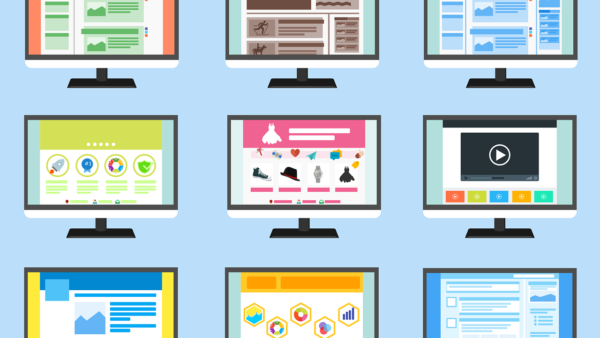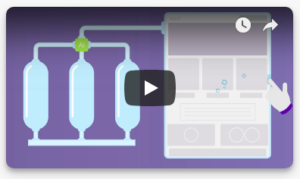The Simple Guide to Website Redesign and Key Pillars to Optimization

The topic of “Website Redesign” can be a tricky topic for many marketers and executives. Propose it to your CEO, and you may get a response like this:
“Why do we need a redesign? What we’ve got works just fine. Why poke the bear?”
“Our conversions are healthy – there’s no need to jeopardize what already works.”
“You’re crazy – you want to fool around with something that’s already producing results?!”
But, if you pitch a redesign to the HiPPO (Highest Paid Person’s Opinion), and they get you – you can bet your last dollar it’s time for one.
From the naysayers to those who’ve got your back – there are undoubtedly concerns:
- Impact on conversions
- Effects on SEO
- Page load speeds
- Misdirected branding and messaging
- Opportunity cost on other initiatives
It takes about 50 milliseconds (that’s 0.05 seconds!) for users to form an opinion about your website to determine whether they like your site or not and whether they’ll stay or leave.
Website redesign has to be done sooner or later. Think of Facebook – if Zuckerberg didn’t change Facebook’s design from what it was in the very beginning, would Facebook still be successful, today?
There are remedies to the concerns above. The following is a list of four pillars of website optimization that you should consider to ensure you’re on track to launch a more effective website.
1. Understanding the Customer Journey
When you can effectively answer customer questions on your website, you have an opportunity to generate more sales-ready leads. By understanding the sales pipeline and how to move a lead from marketing-qualified to sales-qualified, the right content needs to be in place.
On average, conversion rates are six times higher for companies that use content marketing than those that don’t.
A redesign has to incorporate the right message with every touchpoint to lead visitors down the sales funnel.
2. Getting Feedback from Stakeholders
From sales to marketing, to IT and management, forward-thinking marketers need approval on redesign from all teams. After all, they each bring key insights, insights that you may not have discovered yourself!
Everyone needs to play a role to ensure the redesign phase happens smoothly.
3. Extending Your Brand
Fan of facelifts? You may be or not. But, a redesign is just like one. Your brand is your story; you need to work on improving your identity to ensure refinement and accurate representation of who you are.
Your website extends your brand and ensures that visitors gain a positive impression, an impression that has to be maintained long after the customer’s initial visit.
4. Understanding Your Audience
The most effective marketers have a firm grasp over who their ideal customers are.
Is it the C-level exec?… The marketing manager? Is it a prospect who’s looking to switch from one platform to another? These variables all need to be considered.
The most effective marketers are experts at getting into the minds of customers to understand how they think. They excel at learning about their needs and deliver what appeals to them most.
The Importance of Testing And Optimizing
Whether for rebranding, refreshing the look and feel, or changing the structure of a single page, all these elements impact metrics. So how do you ensure you get a boost in results? Testing, testing, and more testing!
Conversions
Once a visitor lands on your homepage, what do they see?
Is your message clear and your website architecture easy enough to navigate through? You see, each action that a user takes has to be tied to a desired outcome; that can be the number of page visits, video views, and/or button clicks.
That’s where conversion numbers come in.
The basic conversion rate equation is:
Conversion Rate = Total number of conversions / Total number of sessions (visits).
In a month, if your site reaches a total of 100,000 sessions and registers a total of 10,000 orders, your conversion rate is = 10,000/100,000 = 10%
Examples of goals you should aim for:
- Double conversion through the website by end of the year.
- Redefine calls to action (CTAs).
- Generate 20 backlinks each month.
- Gain 500 new newsletter subscribers.
Usability
Your message needs to be conveyed to navigate through your website without having the urge to leave. This depends on website speed, and responsiveness – all factors shaping up for a positive user experience. In fact, Recent findings from Forrester Research suggest that a well-conceived, frictionless UX design could potentially raise customer conversion rates up to 400%.
There are many email service providers (ESPs), but MailChimp differentiates itself:
This home page maximizes usability by having a:
- Big red sign-up button (good color to draw attention). There is a sign-up button in the header too, giving visitors the option to sign-up from any page on the website.
- Clear copy: “2.5 million people use MailChimp”. This adds credibility and reduces a visitor’s perceived risk of using the product or service if they haven’t heard of the brand.
A/B Split Testing
A/B testing allows marketers to make careful changes to a user’s experience on a website.
When browsing an eCommerce store, shoppers want to have the ability to view products quickly without struggling to maneuver for details.
One technique many companies use is called “quick view,” where a person hovers their cursor over a product. Nearly half of the top 50 US eCommerce websites offer quick views:
The page on the left doesn’t offer a quick view – whereas, the one on the right does.
This eCommerce store offers:
- The ability for shoppers to hover over products.
- The ability to click on a product to get key information.
- Make a purchase directly from the hovered product.
Content
If your audience doesn’t get the information they need, you need to reassess your content strategy. Content needs to be concise, comfortable to read, and relevant to the visitor’s needs.
Look at the leading news website on the web, CNN:
The website offers:
- Short-form on the home page with links to longer-form copy.
- Multiple-column for a more pleasing design than a single column.
- Effective website architecture and easy navigation.
Examples of content goals to consider:
- Create four blog posts a month.
- Develop a comments section on blogs to increase engagement.
Search Engine Optimization
Optimizing your website for organic results determines how quickly and easily your customers are able to find your website. With alternative text, efficiently used HTML tags, and relevant keywords, Google crawlers will be able to find your pages.
Goals for effective SEO:
- Generate 50 backlinks per month.
- Convert site to HTTPS.
- Develop a mobile version of the website.
- Hire an SEO specialist to the team.
Analyst Bottom Line
A visitor expects a website to load quickly, be easy to navigate through, and contain the right information. Add an appealing design, and you’ve got a recipe for a high converting website.
At Reactful, we understand that conversion rate optimization is no easy game. But, our process is to focus on creating data-driven results to aid in the redesign phase.
Keep in mind the above pillars for optimization, and you will increase your revenue enough to justify the testing that needs to be done.
If you are looking for a web personalization platform that engages and converts customers, sign up for a free trial with Reactful to boost your sales, today!






